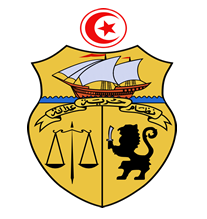Tunisia: Government
Key Figures
- Chief of State:
- President Kais Saied
- Head of Government:
- Prime Minister Ahmed Hachani
Overview
- Government Name:
- Republic of Tunisia
- Constitution:
- The Constituent Assembly finished draft in April 2013 but still working on it. Issued constitutive law in the interim provides 3 typical branches of government and gunarteed human rights.
- Government Type:
- Republic

Index of Economic Freedom
Grades each country on a scale of 0 to 100, based on ten freedoms, with 100 representing the greatest amount of economic autonomy from government intervention. Source: Heritage Foundation (2023)
Country Risk Rating
C
A very uncertain political and economic outlook and a business environment with many troublesome weaknesses can have a significant impact on corporate payment behavior. Corporate default probability is high. Source: Coface (2024)
Government Branches
| Main Powers | Election Process | Election Cycle 1 | |
|---|---|---|---|
| Executive | President elects prime minister and executes policies. |
President is elected by parliament, while the prime minister is elected by parliament. |
5 years |
| Judicial | Influenced by French civil law amd interprets Constitution. |
Appointed by president. |
Until dismissal by executive branch |
| Legislative | Votes on policies and treaties, currently in charge of drafting a constitution. |
Tunisian Constituent Assembly members are elected through a closed-list proportional representation system. |
5 years |
Regional Trade Blocs
International Organization Participation [2]
Environmental Agreements [3]
Tax Information [2]
- Tax Authority:
- Ministry of Finance
- Tax Name:
- VAT
Sources:
- ElectionGuide http://www.electionguide.org/
- EY, http://www.ey.com
- CIA World Factbook, https://www.cia.gov/the-world-factbook/
- U.S. Bilateral Relations Fact Sheets http://www.state.gov/r/pa/ei/bgn/


